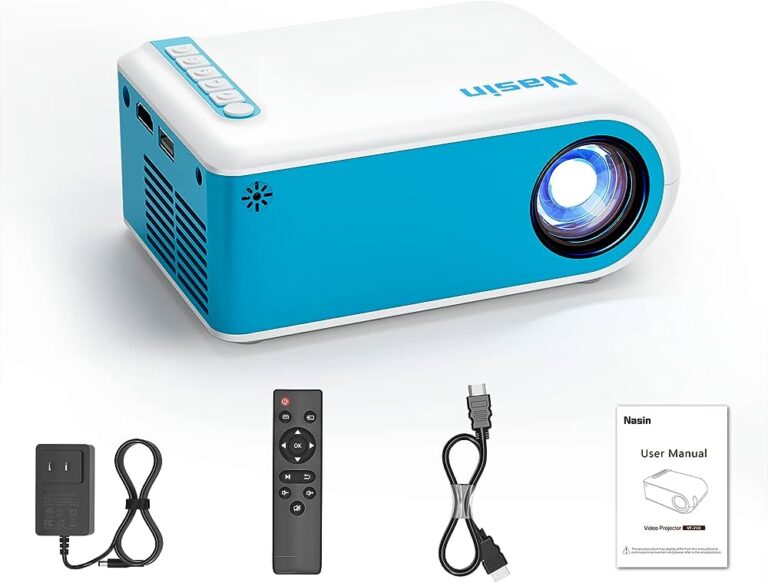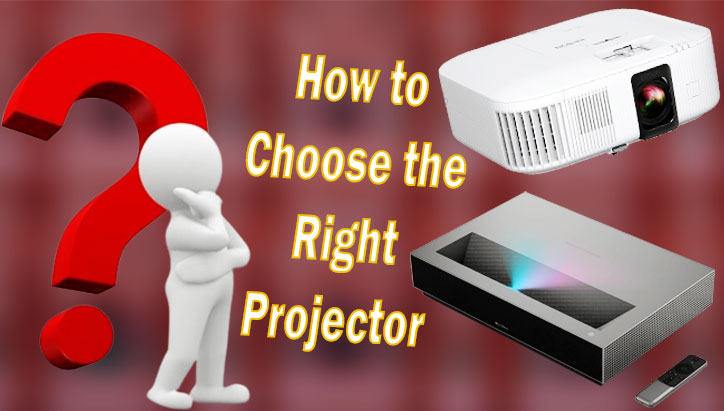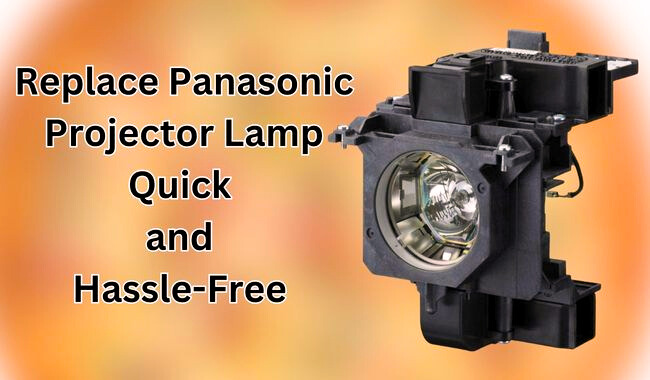4K Vs. 1080P Projector Showdown: Which Delivers the Ultimate Picture Quality?

The main difference between a 4K and a 1080P projector is the resolution they offer. A 4K projector provides a higher resolution and better image quality compared to a 1080P projector.
When deciding between the two, it is important to consider your specific needs and budget. If you are looking for a projector that offers superior image clarity and detail, a 4K projector would be the ideal choice. With its higher pixel count and enhanced color accuracy, a 4K projector delivers a more immersive viewing experience, especially for large screens or closer viewing distances.
However, if you are on a tight budget or plan to use the projector for smaller screens or casual viewing, a 1080P projector can still provide satisfactory image quality. Ultimately, your decision should be based on your requirements and budget constraints.
TABLE OF CONTENTS
Resolution Matters
Discover the key differences between 4K and 1080P projectors with Resolution Matters. Dive into the world of enhanced visuals and make an informed decision for your viewing experience.
When it comes to choosing between a 4K and 1080P projector, resolution is a crucial factor to consider. The resolution determines the clarity and level of detail you can expect from your projected images. In this section, we will explore the importance of resolution and how it can impact your viewing experience.
Clarity At Its Best
-
- 4K Resolution: With a resolution of 3840 x 2160 pixels, 4K projectors offer four times the number of pixels compared to 1080P projectors. This means you can enjoy incredibly sharp and crisp images with unprecedented clarity. Every minute detail is brought to life, providing a highly immersive viewing experience.
-
- 1080P Resolution: While 1080P projectors have a resolution of 1920 x 1080 pixels, they still offer excellent picture quality. You can expect smooth visuals and vibrant colors that bring your movies, games, and presentations to life. Although not as detailed as 4K resolution, 1080P projectors are still more than capable of delivering an enjoyable viewing experience.
Detail Orientation
-
- 4K Resolution: The higher resolution of 4K projectors allows you to fully appreciate intricate details. Whether you’re watching a blockbuster movie or analyzing data in a presentation, every nuance is captured and displayed with exceptional precision. This level of detail enhances the overall viewing experience, making it feel more realistic and immersive.
-
- 1080P Resolution: With 1080P resolution, you’ll still be able to see a good amount of detail in your projected content. However, compared to 4K resolution, the level of detail might not be as pronounced. If you’re not too concerned about subtle details and prioritize overall image quality, a 1080P projector can still provide a satisfying visual experience.
Compatibility And Availability
-
- 4K Resolution: As technology advances, 4K content is becoming increasingly prevalent. Streaming platforms, Blu-rays, and gaming consoles offer a wide range of 4K content options. If you’re an enthusiast who enjoys the latest movies and games in the highest quality, a 4K projector is the way to go. However, it’s important to ensure that your source devices and content support 4K resolution.
-
- 1080P Resolution: 1080P projectors have been the standard for many years, and as a result, there is an abundance of compatible content available. Most movies, games, and presentations are designed with 1080P resolution in mind. If you’re not overly concerned about having the absolute highest resolution, a 1080P projector is a versatile option that can still provide an enjoyable viewing experience.
The resolution of a projector plays a significant role in determining the quality and level of detail you can expect from your projected images. If you prioritize exceptional detail and want to future-proof your viewing experience, a 4K projector is the way to go.
However, if you’re on a budget or simply don’t require the highest resolution, a 1080P projector can still provide a satisfying visual experience. Consider your needs, preferences, and available content when making your decision.
Price Point Analysis
Price point analysis helps determine the value of 4K vs. 1080P projectors, allowing you to make an informed purchasing decision based on budget and desired features. Compare resolution, image quality, and pricing to find the perfect projector for your needs.
When it comes to deciding between a 4K and a 1080P projector, price point plays a crucial role. Both options have their own advantages and drawbacks, so it’s essential to choose a projector that aligns with your budget and requirements.
Below, we’ll analyze the price differences between the two projector types to help you make an informed decision:
4K Projectors:
-
- Higher Price: 4K projectors generally come with a higher price tag compared to 1080P projectors. This is mainly due to the advanced technology and increased resolution they offer.
-
- Enhanced Clarity: With four times the number of pixels compared to 1080P projectors, 4K projectors provide exceptionally sharp and detailed images. You can enjoy a truly immersive visual experience with lifelike colors and intricate details.
-
- Future-Proof Investment: Investing in a 4K projector can be seen as a future-proof decision, as more and more content is being produced in 4K resolution. By having a 4K projector, you ensure compatibility with upcoming movies, shows, and gaming options.
-
- High-Quality Scaling: Even if you don’t have access to 4K content, 4K projectors excel at upscaling lower-resolution content, making it appear sharper and more vibrant.
1080P Projectors:
-
- Budget-Friendly Option: If the price is a major concern, 1080P projectors offer a more affordable alternative. They are generally priced lower than their 4K counterparts, making them a popular choice for those on a tighter budget.
-
- Good Image Quality: While 1080P projectors may not offer the same level of detail and sharpness as 4K projectors, they still provide excellent image quality. You can expect vibrant colors, decent contrast, and smooth motion when watching movies or playing games.
-
- Wide Content Availability: The majority of movies, TV shows, and games are available in 1080P resolution. So, if most of your content is in this resolution, a 1080P projector will do the job just fine.
-
- Lower Power Consumption: Compared to 4K projectors, 1080P projectors tend to have lower power consumption, making them a more energy-efficient option in the long run.
When it comes to the price point analysis, 1080P projectors are a budget-friendly choice that offers good image quality and wide content availability. On the other hand, 4K projectors provide enhanced clarity and a future-proof investment but come at a higher price.
Consider your budget, content preferences, and long-term needs to make the best decision for your home theater setup or professional presentations.
Content Compatibility
Deciding between a 4K and 1080P projector? Ensure content compatibility by matching resolution for a superior viewing experience.
With the popularity of home theaters on the rise, it’s important to choose the right projector for your needs. One of the biggest choices you’ll face is whether to go for a 4K or 1080P projector. In this section, let’s take a closer look at content compatibility and how it differs between these two options.
-
- Native 4K resolution: 4K projectors offer a native resolution of 3840 x 2160 pixels, which means they can display content in stunning detail and clarity. They are ideal for watching native 4K content, such as movies, TV shows, and games, as they can showcase every minute detail.
-
- Upscaling capabilities: While 4K projectors excel at displaying native 4K content, they also come equipped with advanced upscaling technology. This means that even if you’re watching content that is not originally in 4K, the projector will enhance it and try to make it look as close to native 4K as possible. This is great news if you have a large library of HD or Full HD content.
-
- HDR support: High Dynamic Range (HDR) is a feature that enhances the contrast and color range of content, resulting in more vibrant and realistic visuals. Many 4K projectors support HDR, allowing you to enjoy an immersive viewing experience with enhanced colors and deeper blacks.
-
- 1080P Projectors:
-
- Full HD resolution: 1080P projectors offer a resolution of 1920 x 1080 pixels, which is still considered high-definition and can deliver crisp and detailed images. They are ideal for watching HD content, such as Blu-ray movies, streaming services, and gaming consoles.
-
- Standard content compatibility: While 1080P projectors cannot display native 4K content, they can still handle lower-resolution content without any issues. This means that you can still enjoy your DVD collection, standard definition TV shows, and older games on a 1080P projector without sacrificing quality.
-
- Affordable option: If you’re on a budget or don’t have a lot of 4K content, a 1080P projector may be the more cost-effective choice. They offer a good balance between price and performance, making them a popular choice for many home theater enthusiasts.
The choice between a 4K and 1080P projector will ultimately depend on your specific needs and preferences. If you’re a dedicated cinephile or gamer and have a large collection of 4K content, a 4K projector will provide the best visuals.
However, if you’re on a budget or primarily watch HD content, a 1080P projector can still deliver stunning image quality at a more affordable price point. As always, consider factors like budget, room size, and viewing distance before making your decision.
Room Size And Viewing Distance
Choosing between a 4K and 1080P projector depends on your room size and viewing distance. Consider the space available and the optimal seating position to enjoy the best picture quality and immersive experience.
Are you considering upgrading your home theater setup with a new projector? If you’re torn between a 4K and a 1080P projector, one important factor to consider is the size of the room where you’ll be enjoying your movies and the distance between the projector and the screen.
Here’s a breakdown of how room size and viewing distance can affect your projector choice:
Room Size:
-
- Small to medium-sized rooms:
-
- If you have a smaller space available for your home theater, a 1080P projector may be the better choice. The lower resolution can still deliver impressive picture quality, and you won’t feel like you’re overwhelming the room with a large, high-resolution image.
-
- Additionally, if your room lacks complete light control, a 1080P projector can often handle ambient light better, resulting in a clearer and more vibrant image compared to a 4K projector.
-
- Large rooms:
-
- For larger rooms where you have more distance between the projector and the screen, a 4K projector can truly shine. The higher pixel density and finer details of a 4K image will be more noticeable when viewed from a greater distance, resulting in a sharper and more immersive viewing experience.
Viewing Distance:
-
- Close viewing:
-
- If you tend to sit closer to the screen, perhaps due to a smaller room or personal preference, a 4K projector is the way to go. The increased pixel density will make the image appear smoother and more detailed even at closer distances.
-
- Optimal viewing distance:
-
- A 1080P projector is typically suitable for a moderate viewing distance. If you’re sitting at a distance that allows you to fully appreciate the screen size without feeling the need to move your head, a 1080P resolution will provide a satisfying level of detail.
-
- Longer viewing distance:
-
- If you have a large room and prefer to sit at a considerable distance from the screen, a 4K projector would offer a noticeable advantage. Its higher resolution ensures that even from a distance, you can still discern the fine details and enjoy a clear, crisp image.
As you can see, both room size and viewing distance play a crucial role in determining whether a 4K or a 1080P projector is the right choice for your home theater setup. Consider the size of your room and where you’ll be positioned to determine which resolution will provide the best viewing experience.
Technology Behind The Scenes
Discover the hidden technology behind the scenes of 4K and 1080P projectors and gain insights into their differences and unique features for an outstanding viewing experience. Explore advanced resolution options for lifelike visuals and immerse yourself in the world of high-definition projection.
When it comes to choosing between a 4K and 1080P projector, understanding the technology behind the scenes is essential. Let’s dive into the differences and advantages each option has to offer.
Resolution: Clearer And Crisper Images
-
- 4K Projector: With a resolution of 3840 x 2160 pixels, a 4K projector delivers four times the detail of a 1080P projector. This means sharper and more lifelike images, bringing out every intricate detail on the screen.
-
- 1080P Projector: A 1080P projector boasts a resolution of 1920 x 1080 pixels, providing excellent picture quality. While it may not match the stunning clarity of a 4K projector, it still offers a crisp viewing experience.
Color Accuracy: Vibrant And Realistic Colors
-
- 4K Projector: Thanks to its higher resolution, a 4K projector can produce a broader color spectrum, resulting in more vivid and accurate colors. This makes images and videos appear more lifelike, enhancing the overall viewing experience.
-
- 1080P Projector: While a 1080P projector may not offer the same range of colors as a 4K projector, it still delivers vibrant and realistic color reproduction, creating an immersive visual experience.
Contrast Ratio: Deep Blacks And High Brightness
-
- 4K Projector: A 4K projector usually has a higher contrast ratio, allowing for deeper blacks and brighter whites. This creates a more dynamic picture with improved shadow detail, enhancing the overall image quality.
-
- 1080P Projector: Although a 1080P projector may not match the contrast ratio of a 4K projector, it can still deliver impressive black levels and bright images, providing an enjoyable visual experience.
Compatibility: Sources And Content
-
- 4K Projector: As 4K content becomes more prevalent, a 4K projector ensures compatibility with the latest devices and streaming services that support ultra-high-definition resolution. It future-proofs your entertainment setup.
-
- 1080P Projector: While 4K content is on the rise, a 1080P projector remains a reliable choice for those who primarily consume 1080P content. It remains widely compatible with various sources and devices.
Both 4K and 1080P projectors offer their own set of advantages based on your viewing preferences and needs. Understanding the technology behind the scenes helps you make an informed decision. So, assess your requirements and choose the projector that will bring your entertainment to life with stunning visuals.

Credit: www.projectorscreen.com
Frequently Asked Questions Of 4K Vs. 1080P Projector
Is A 4K Projector Worth It Over 1080P?
4K projectors are worth it over 1080p for their higher resolution and enhanced image quality.
Does 1080P Look Better On A 4K Projector?
Yes, 1080p content can look better on a 4K projector due to upscaling technology.
Is A 1080P Projector Good For Movies?
Yes, a 1080p projector is great for movies. It offers high-resolution playback, delivering sharp picture quality and an immersive cinematic experience.
Is 4K Projector Screen Worth It?
Yes, a 4K projector screen is worth it because it provides sharp and detailed image quality for a more immersive viewing experience.
Conclusion
The choice between a 4K and a 1080P projector ultimately depends on your specific needs and preferences. A 4K projector offers incredibly sharp and detailed images, making it ideal for vivid and immersive experiences, particularly in larger rooms or for watching movies on a big screen.
On the other hand, a 1080P projector still delivers high-definition images and can be a more affordable option for those on a budget or for smaller-sized rooms. It’s important to consider factors such as the size of the projection screen, viewing distance, and the availability of 4K content.
Ultimately, both types of projectors can provide an enjoyable viewing experience. So, whether you decide to go for the ultra-high definition of 4K or the affordability of 1080P, the key is to choose the projector that best fits your needs and brings your entertainment to life.






